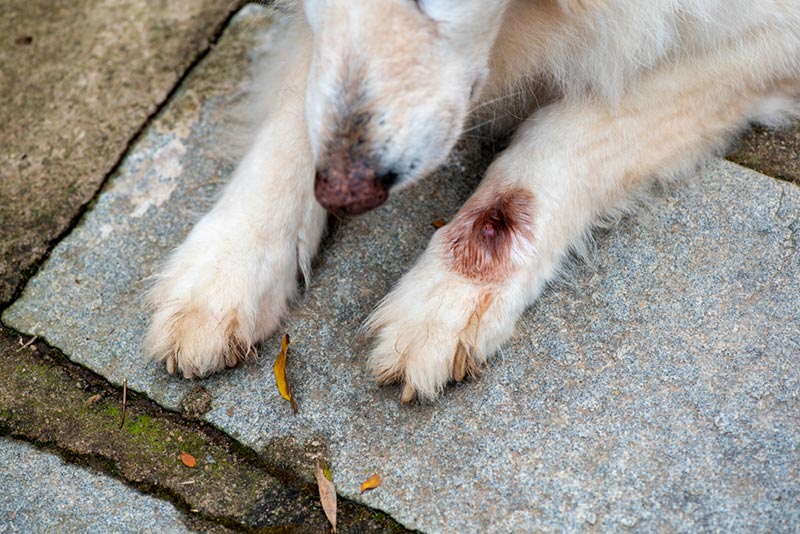My Dog Ate Marijuana – Here’s What to Do (Vet Answer)

By Dr. Olivia Speight, BVSc MRCVS (Vet)
Updated on
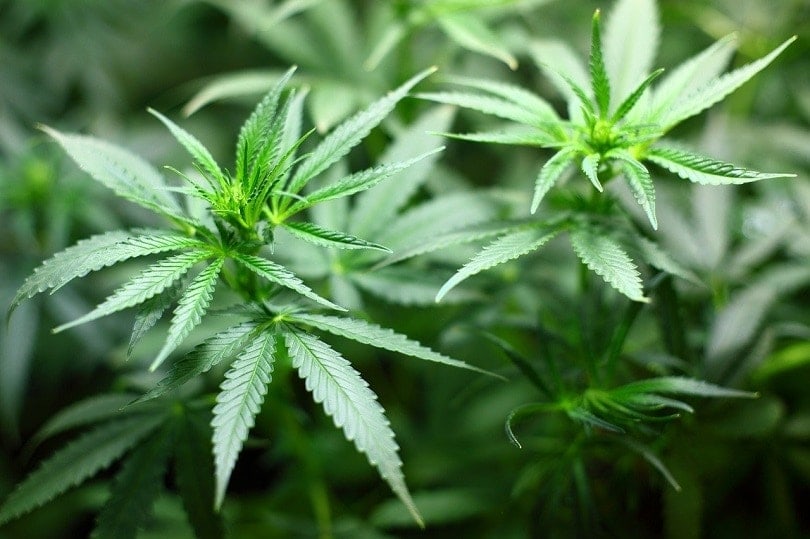
Marijuana is a name used for the psychoactive substance which is derived from the dried leaves and flowers of the cannabis plant, also known as hemp. “Psychoactive” means that the use of this drug has an influence on the brain – affecting mood, behavior, or perception.
The main routes of use in humans are via smoking/vaping (inhaling) or ingesting (eating) the drug. The increase in consumption of edibles (foods such as sweets or butter containing the drug) has meant that the drug is more accessible and more appealing to dogs that may inadvertently ingest it when scavenging.
It depends on where you are in the world and whether it is legal for you to have this substance in your home. The legalities of it – referring to its possession, distribution, and use (recreational vs. medical) – vary between countries. In the US, this differs between states, whereas in the U.K., marijuana is illegal, with the only exceptions being specific medical uses, and even then is only available under prescription from a doctor. It’s your responsibility to make sure you are abiding by the law in whichever location you are living or visiting.
Whichever name you choose, we can all be in agreement that it is not something that your dog should be eating. The increase in medicinal use of marijuana has seen an increase in the cases of toxic ingestion in dogs. What happens if a dog eats weed or edibles? If your dog ate marijuana, you need to contact your veterinarian immediately. Let’s take a closer look:
Should We Be Worried?
The cannabis plant contains a substance called delta-9-tetrahydrocannabinol, also known as THC. This is the substance that causes the main effects seen when ingested or inhaled.
There has been an increase in the use of cannabidiol (CBD) oil as an alternative therapy/supplement in both humans and animals. CBD oil from reputable sources contains very small levels of THC and should not have the toxic effects described in this article.
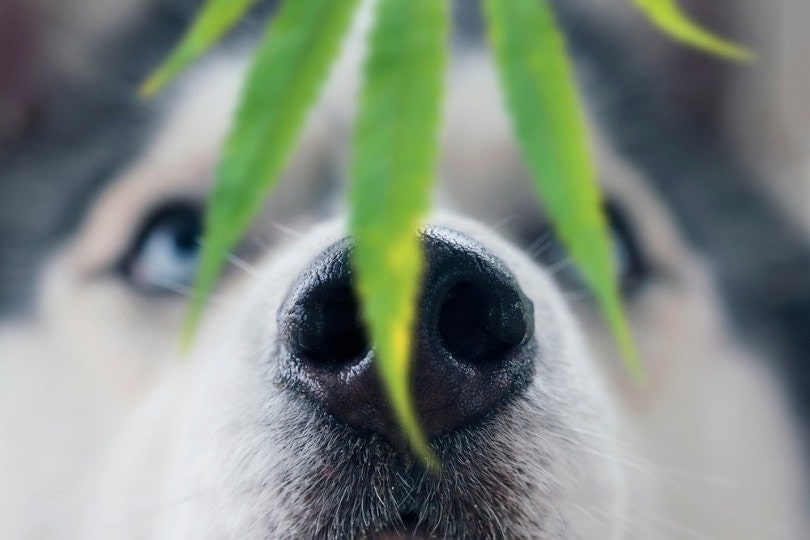
My Dog Ate Weed: How Long Will It Last?
Marijuana is processed in similar ways in dogs as it is in humans. It is absorbed quickly and takes a long time to be metabolized (cleared from the body).
The most frequently seen clinical signs are similar to those seen in humans: neurological (affecting the brain) or gastrointestinal (affecting the gut). These can progress to seizures, inability to stand, and a depressed demeanour or even loss of consciousness.
Clinical signs will usually be seen around 1-3hours after the dog has eaten marijuana and can last as long as 36-72 hours afterwards.
Can Problems Be Treated?
Treatment depends on the amount eaten and when. In most cases, treatment is either decontamination (making a dog sick) or supportive care such as hospitalization and medical treatment.
Most dogs will recover fully and with no lasting side effects; however, there have been deaths reported as a result of marijuana, and veterinary treatment/advice should always be sought.
Does It Matter How Much They Ate?
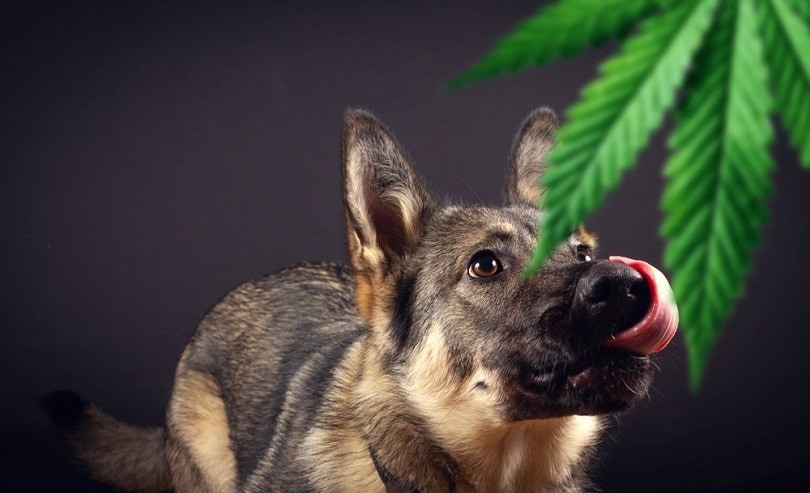
In certain cannabis products, the THC content is more concentrated; therefore, treatment is recommended for ingestion of any amount of marijuana.
The VPIS (Veterinary Poisons Information Service) quotes the minimum lethal dose in dogs to be over 3 mg/kg of body weight. Evidence shows that the severity of side effects increases with the amount eaten.
My Dog JUST Ate Marijuana – What Happens Now?
Contact your vet as a matter of urgency. It can take up to 2 hours for the contents of a dog’s stomach to empty into their small intestine. If your dog has just eaten the marijuana (within the past hour) and is showing no signs, then your vet may decide to give them medication to make them sick. This is not appropriate in every case.
On arrival at the practice, your dog will be checked by a vet who will take a history from you to assess for any health concerns and the risk. It is so important that you are honest with your vet about what your dog has eaten. This will help them to treat your pet in the most appropriate way and help them recover to the best of their ability. Withholding information because you’re unsure of the reaction is not fair on your dog and may delay or prevent them receiving the treatment that they need.
After your dog has been checked over, the vet will give an injection of a drug to make them vomit. This is usually effective within 20minutes, and effects can last for up to 1 hour, although usually less. If you dog is showing side effects such as reduced consciousness, then your vet is likely to decide it is not safe to make them vomit due to the risk of them aspirating (breathing in) the vomit.
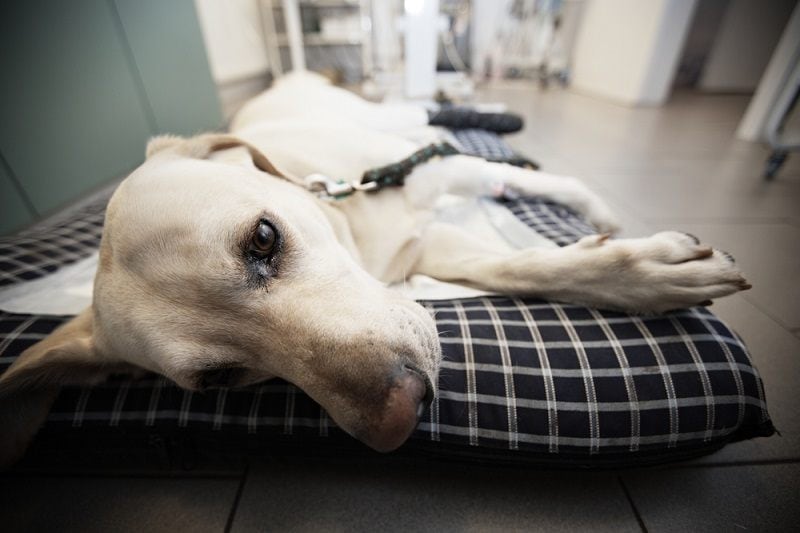
I’m Not Sure When They Ate It – What Do I Do?
Your vet may wish to run some other tests, particularly in cases where the history of exposure is not known. For example, if a dog has developed signs after eating something unknown on a walk. This may include blood tests and/or imaging (such as X-rays).
In some parts of the world, the use of an over-the-counter drug screen test to check for the presence of THC in urine has been recognized as a means of assisting the diagnosis of cannabis exposure in dogs. However, the accuracy of these tests in dogs compared to humans has not been established yet, so they are not the first choice for many practices.
Depending on your dog, hospitalization for intravenous fluids (a drip) and medications to control any symptoms such as seizures may be recommended. The activated charcoal may be given to help absorb any toxins in the gut (this is different from charcoal available for general sale which should not be given).
What Can We Do to Reduce the Risk?
The best way to reduce risk is to prevent any access in the first place. If you do have marijuana (in whatever form) at home or on your person, make sure your pets have no chance of gaining access to it. Keep it stored securely in a safe place that they cannot access. This will help avoid any unwanted emotional or financial costs if they do gain access to it and require treatment.
If your dog has a history of eating things on walks that they shouldn’t and this becomes a concern to their health, then you may need to consider a muzzle as a last resort when walking. This should be a basket muzzle (to allow them to breathe and smell), and if you do feel that this is something you need to consider, then we would advise speaking to a qualified veterinary behaviorist.
To stay safe, prevent access in the first place, and if you are concerned about your dog, then seek urgent advice for the best chance of a positive outcome for you and your pet.
See Also:
- Dog Ate a Prenatal Vitamin? Our Vet Explains
- Nicotine Poisoning Effects On Dogs: Symptoms, Concerns & Treatment (Vet Answer)
Featured Image Credit: 7raysmarketing, Pixabay





